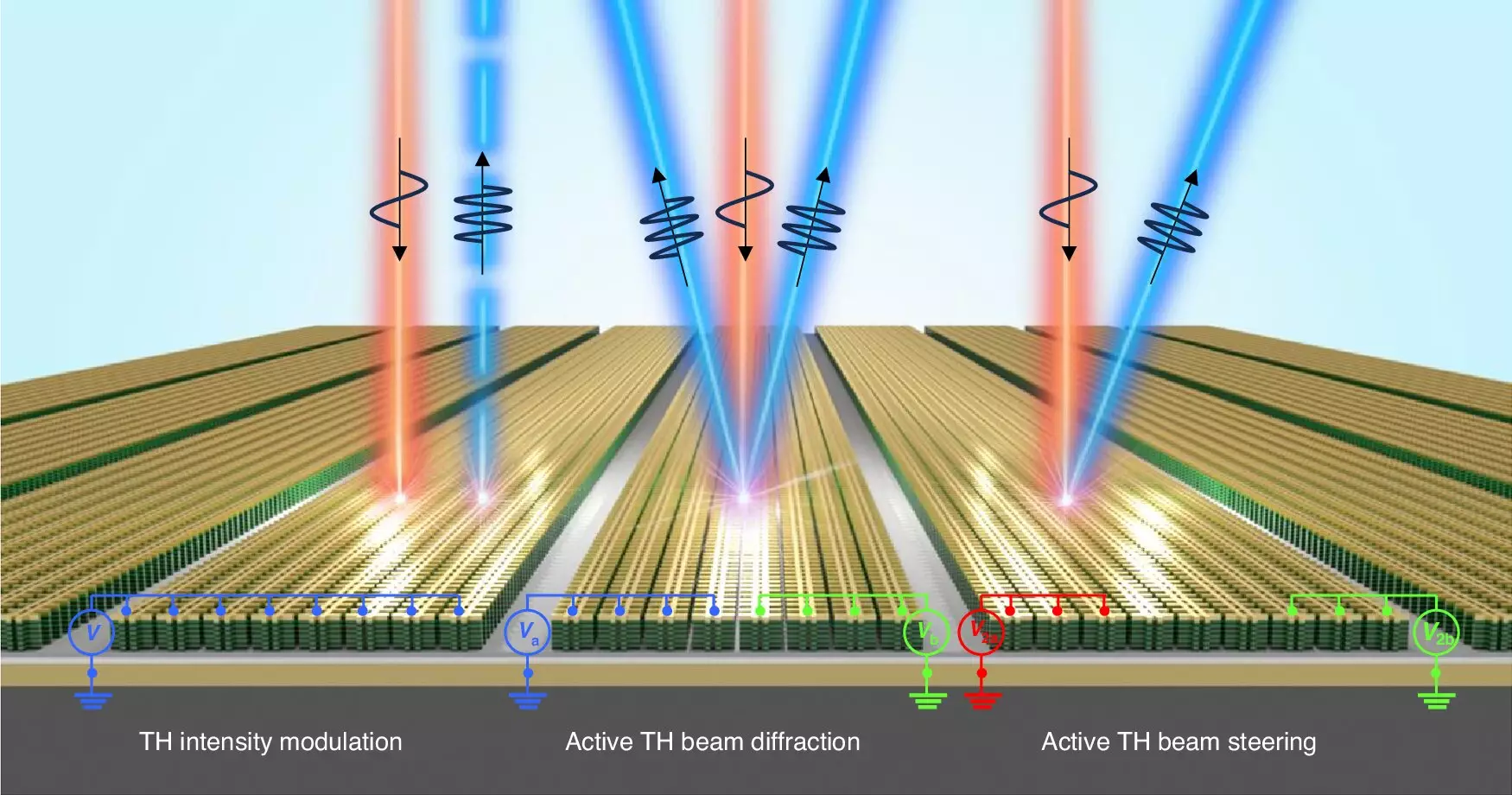Recent advancements in optical technology have brought to light the potential of nonlinear optical metasurfaces, which are designed with features smaller than the wavelength of light. This innovative approach is pushing the boundaries of various fields, particularly in communication technologies and medical diagnostics. Through the work led by Professor Jongwon Lee at UNIST, the introduction of an electrically tunable third-harmonic generation (THG) metasurface signifies a major leap towards versatile and compact optical devices.
Third-harmonic generation is a nonlinear optical process that can produce new wavelengths from an incoming light signal. The implications of this are profound, as they allow for the enhancement of information transmission capabilities compared to conventional laser systems, which typically operate on a single wavelength. The current study reveals that researchers achieved an impressive modulation depth of 450% in THG signals and significantly suppressed zero-order THG diffraction by 86%. Such achievements not only validate the effectiveness of this technology but also highlight its potential for creating lightweight optical instruments.
At the core of this innovation lies the synergy between intersubband polaritonic metasurfaces and multiple quantum wells (MQWs). These structures facilitate electrically tunable properties that were previously unattainable, allowing for enhanced control over the emitted light’s characteristics. By integrating quantum wells within the metasurface framework, researchers have paved the way for unprecedented methods of manipulation, including the ability to adjust the local phase of the THG signal beyond 180 degrees.
One of the most remarkable aspects of this technology is its capability for beam steering through phase gradients. This feature opens up possibilities for electrically adjustable optical elements that can serve various functions. The breakthrough achieved with the voltage control of second-harmonic generation (SHG) presents a major step forward, allowing researchers to modulate both the intensity and phase of light independently. Such advancements empower researchers with tools to explore a new realm in light modulation applications.
As emphasized by Professor Lee, the control offered by this new metasurface transforms how we interact with light, leading to potential applications in secure communication, dynamic holography, and advanced quantum sensing sources. With the ability to fine-tune optical properties electrically, this research stands at the forefront of developing next-generation technologies that are not only more efficient but also lighter and more compact.
The groundbreaking insights brought forth by the research team have the potential to redefine optical technologies significantly. By employing smaller and more manageable materials that can be tuned with voltage, future devices may become as thin as paper or even thinner than a human hair. The implications for everyday technology, from medical devices to secure communication channels, are vast and could reshape the technological landscape for years to come. With ongoing exploration and innovation, the transformation of nonlinear optical metasurfaces marks a formidable step towards realizing a more advanced and interconnected world.


Leave a Reply